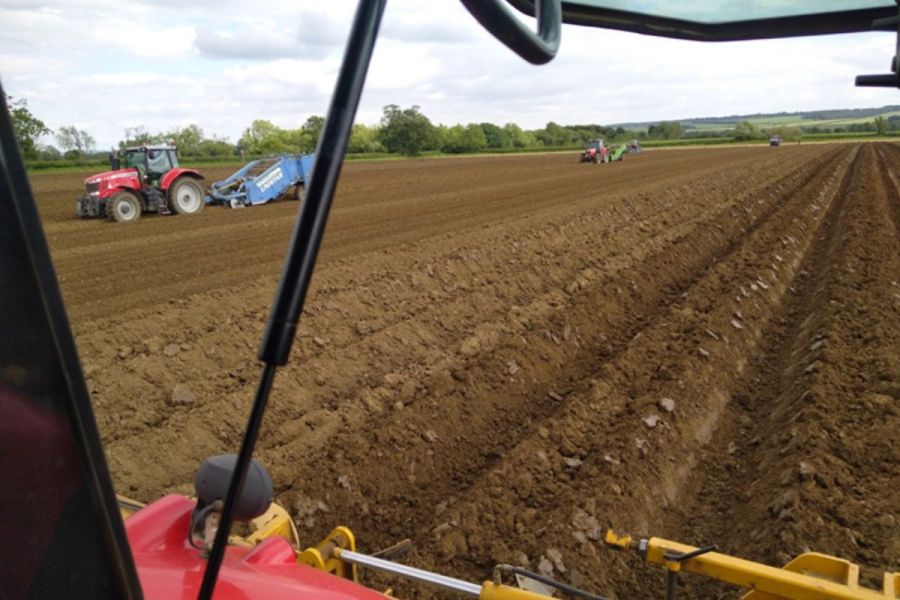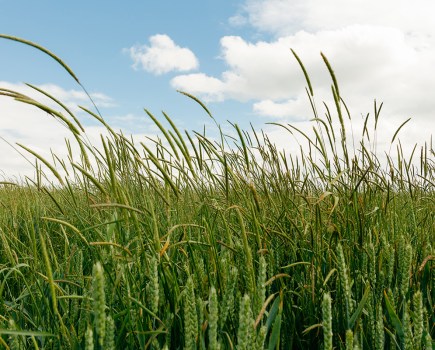By Andrew Wilson
As seasons go, spring 2024 must be one of the most frustrating that I’ve experienced in 30 years of farming. It’s tested everything – from kit to people to resolve, and everything in between. But we’ve made it, somehow!
To say sowing has been protracted is an understatement – field state has dictated planting order more than anything and having several drills has certainly paid off. We sowed the spring beans in the third week of April, which in all honesty, currently look superb.
Spring barley, however, is a different story. We strip-tilled the first Laureate into a levelled potato field on 17 April and placed some fertiliser under it – this looks excellent. The rest is a mixed bag varying from okay to ‘why did we bother’. Some of it replaced second wheat on heavy land and was scratched with a spring tine and sown on 9 May, which is two months later than our standard average drilling date.
The first drilled of our spring oats also followed potatoes in late April, with the last almost direct drilled on 13 May – the latest ever by quite a margin. I’ve taken the view that prices are heading in the right direction and if these moderate spring cereals pay the rent and leave us a bit of much-needed straw, then that’s as much as we can expect.
Root crops haven’t been a walk in the park but finally they’re planted. We managed to sow the pollinator strips in the sugar beet fields in between drilling barley, and finally established the beet by 10 May, all of it with some encouragement placed under the seed. It’s seemingly leapt out of the ground and is currently looking promising.
Speaking of beet, I managed to attend the BBRO’s BeetField event held not too far away at Selby recently, the furthest north it’s ever been by nearly a hundred miles. I urge all beet growers to attend these events; the knowledge transfer possibilities are endless and there’s always something to learn.
We’re generally quite relaxed about potato planting here. Historically our best performing crops are planted in May and emerge in a fortnight, so a late start didn’t seem a big drama a month ago…then more rain happened!
We had 18 days of action and 12 of no planting to get 60ha of potatoes in this year. But, with a lot of frustration with silly breakdowns and a member of staff leaving us due to a change in personal circumstances (we have a vacancy if anyone is looking for a job with plenty of variety?).
At the time of writing, I have around half of our pre-emergence herbicides applied and although the diff lock had plenty of exercise applying them, at least there’s no shortage of moisture to activate them.
From a more positive perspective, we managed to harvest the last of 2023’s potatoes on 4 May and chitting seed looks once again to be worthwhile, with a full two weeks’ less time required from planting to emergence. This will make a significant difference to crop maturity and our harvesting schedule given the indeterminate varieties involved.
On the machinery front, we’ve also had a glimpse of the future when we hosted a demo of a robotic tractor. I’m sure they have a place in UK agriculture in specific circumstances, but the effect of urbanisation will make it nearly impossible for them to replace the average harvest student.
Exercising regenerative farming measures in a challenging season isn’t easy, but we seem to be making progress. Bed tilling sits once again at about a quarter of the area, which is less than I expected. We’re seeing the fruits of 13 years of cover cropping and strategic variety positioning, and for the first time in as long as I can remember, we’ve not used any nematicides at all this season.
These two items strike me as the most significant to reduce, from an energy, EiQ and soil sympathy point of view. I look forward to visiting some trial sites over the summer to pick up a few more tips for the future.
Our winter cereals are a mixed bag varying from ‘four tonne potential’ to a blackgrass infested patchwork of mediocreness, but are romping through growth stages quickly. Add to that prices which are heading in the right direction and fertiliser at least starting the season under a £1/kg of N, it’s not all bad.
Harvest is apparently only a few weeks away but the combine is serviced, the baler has had some exercise with some hay, and the trailers are in a thousand pieces in the workshop, getting ready for hauling what will be an interesting harvest, I am sure.
This article was taken from the latest issue of CPM. For more articles like this, subscribe here.
Sign up for Crop Production Magazine’s FREE e-newsletter here.




